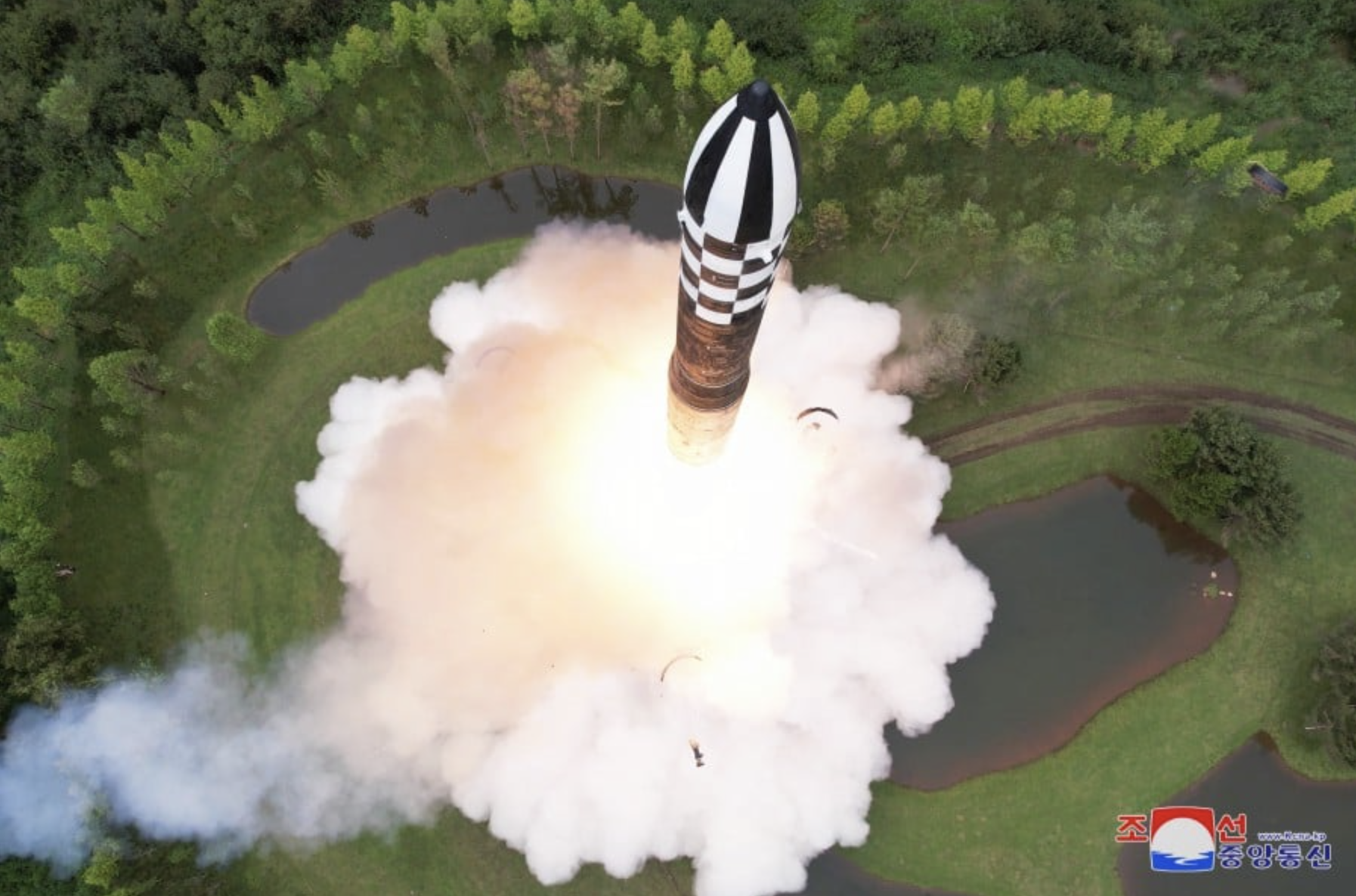
North Korea launched two missiles on Sunday and Monday, with Japan estimating the intercontinental ballistic missile (ICBM) launched on Monday was capable of reaching anywhere on the continental United States. The launches were denounced strongly by the United States, Japan and South Korea.
Japan’s Ministry of Defense (MOD) stated that on Sunday at 10.37 p.m, North Korea launched an eastbound missile from a location near its west coast, and that missile flew for 249 miles with a maximum altitude of 31 miles and landed in the Sea of Japan.
A second launch, this time an ICBM, occurred on Monday at 8.24 a.m. Japan’s MOD stated that the ICBM flew for approximately 73 minutes before landing into the Sea of Japan at 9.37 a.m. – 155 miles northwest of Okushiri Island, Hokkaido, outside of Japan’s exclusive economic zone (EEZ). The flight distance was estimated to be approximately 621 miles, with a maximum altitude of over 3,728 miles. The MOD subsequently released a photo of a falling object believed to be related to the ICBM. North Korea launched a Hwasong-18 ICBM in July, but as of press time has not issued any statements on Monday’s launch and the missile type fired.
Japan Parliamentary Vice Minister of Defense Shingo Miyake said in a press conference that based on the calculations drawn from the missile’s flight trajectory and subject to various factors such as the weight of the warhead, the ICBM could have a range of more than 9,321 miles, making it capable of striking anywhere in the continental United States. Miyake declined to answer questions regarding the ongoing destruction order issued in May in which the Japan Self-Defense Force has been ordered to destroy any North Korean missiles or missile debris that threaten Japan’s territory.
North Korea’s launches prompted calls for action from the leaders of South Korea and Japan. South Korea’s National Security Council issued a release stating that South Korean President Yoon Seok-yeol ordered an immediate and overwhelming response to any provocations by North Korea against South Korean territory and people. The statement also said the South Korean leader ordered active solidarity with the international community to condemn and stop North Korea’s illegal nuclear and missile activities. Yook also ordered the tasks of the ROK-U.S. Nuclear Consultative Group (NCG) be pursued with speed to further strengthen ROK-U.S. nuclear deterrence capabilities against North Korea. He also emphasized that the South Korean government and military must be fully prepared to respond to additional provocations by North Korea during the year-end and New Year holidays.
Japan’s Prime Minister Fumio Kishida, who was holding the first AZEC (Asia Zero Emission Community) Summit in Tokyo, condemned the launches and called for cooperation. “North Korea launched ballistic missiles last night, and this morning as well. We strongly condemn these launches, which are not only a clear violation of United Nations Security Council resolutions, but also threaten regional peace and stability. We look forward to continuing to work with you to achieve the complete verifiable and irreversible dismantling of all North Korean weapons of mass destruction and ballistic missiles of all ranges,” said Kishida in his speech.
The White House issued a readout saying that National Security Adviser Jake Sullivan spoke on Sunday evening U.S. time with South Korea’s National Security Office Director Cho Taeyong and Japan’s National Security Secretariat Secretary General Akiba Takeo following North Korea’s ICBM test. The national security advisors condemned the test, which is a flagrant violation of multiple UN Security Council resolutions. Sullivan reaffirmed the United States’ unwavering commitment to the defense of Japan and South Korea, said the readout, which also stated all three national security advisers underscored the importance of their work to share missile warning data and to coordinate responses to growing cooperation between Russia and North Korea.
North Korea’s launch comes after Friday’s meeting in Washington of the second U.S.-Republic of Korea Nuclear Consultative Group (NCG). Among the outcomes of the meeting, according to a White House release, was the review of enhanced visibility of strategic assets to bolster extended deterrence, including ballistic-missile submarine USS Kentucky’s (SSBN-737) port visit to Busan in July, B-52 strategic bomber flyover and landing on the Korean Peninsula in October and joint observation of an ICBM test launch in November. They also discussed plans to demonstrate strengthened deterrence.
On Sunday, attack submarine USS Missouri (SSN-780) arrived at Busan Naval Base in South Korea for a port visit. Both the port visit and the NCG meeting were denounced by the North Korean Ministry of National Defence in a Sunday in a statement carried by state-run Korean Central News Agency. “The revolutionary armed forces of the DPRK strongly denounce the reckless military moves of the U.S. and the military gangsters of the ROK who are maximizing the tension in and around the Korean peninsula with hostile and provocative acts against the DPRK until the end of the yea,r” read the statement which concluded with warning that any attempt to use armed forces against North Korea will face a preemptive and deadly counteraction.





